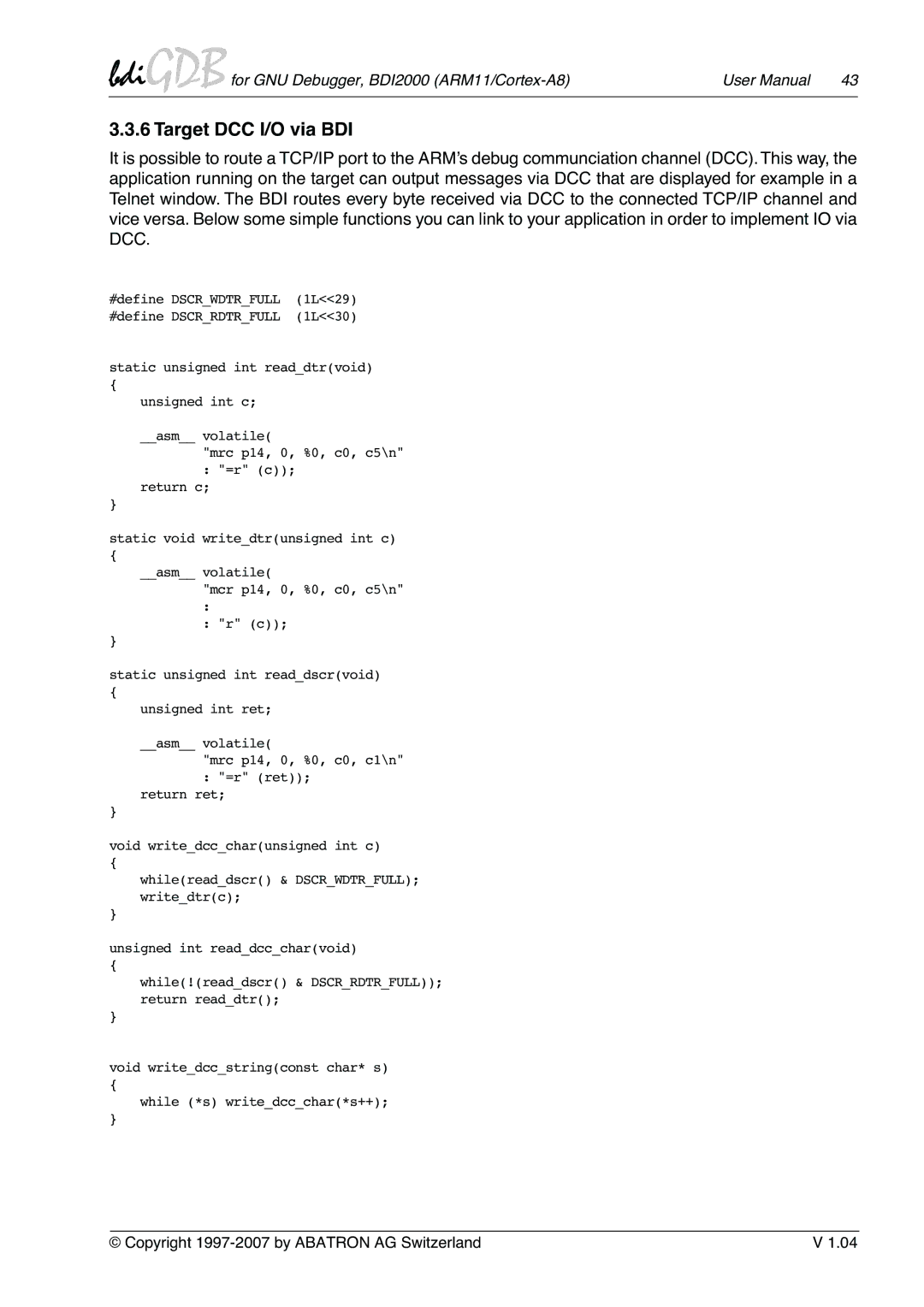
bdiGDB for GNU Debugger, BDI2000 | User Manual 43 |
3.3.6 Target DCC I/O via BDI
It is possible to route a TCP/IP port to the ARM’s debug communciation channel (DCC). This way, the application running on the target can output messages via DCC that are displayed for example in a Telnet window. The BDI routes every byte received via DCC to the connected TCP/IP channel and vice versa. Below some simple functions you can link to your application in order to implement IO via DCC.
#define DSCR_WDTR_FULL (1L<<29) #define DSCR_RDTR_FULL (1L<<30)
static unsigned int read_dtr(void)
{
unsigned int c;
__asm__ volatile(
"mrc p14, 0, %0, c0, c5\n"
:"=r" (c));
return c;
}
static void write_dtr(unsigned int c)
{
__asm__ volatile(
"mcr p14, 0, %0, c0, c5\n"
:
: "r" (c));
}
static unsigned int read_dscr(void)
{
unsigned int ret;
__asm__ volatile(
"mrc p14, 0, %0, c0, c1\n"
:"=r" (ret)); return ret;
}
void write_dcc_char(unsigned int c)
{
while(read_dscr() & DSCR_WDTR_FULL); write_dtr(c);
}
unsigned int read_dcc_char(void)
{
while(!(read_dscr() & DSCR_RDTR_FULL)); return read_dtr();
}
void write_dcc_string(const char* s)
{
while (*s) write_dcc_char(*s++);
}
© Copyright | V 1.04 |
